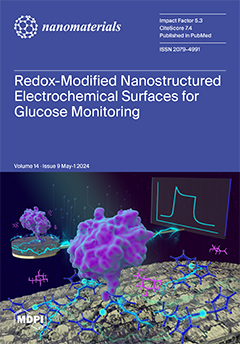Antibiotic abuse, particularly the excessive use of tetracycline (TC), a drug with significant environmental risk, has gravely harmed natural water bodies and even posed danger to human health. In this study, a three-dimensional self-supported MoS
2/MXene nanohybrid with an expanded layer spacing
[...] Read more.
Antibiotic abuse, particularly the excessive use of tetracycline (TC), a drug with significant environmental risk, has gravely harmed natural water bodies and even posed danger to human health. In this study, a three-dimensional self-supported MoS
2/MXene nanohybrid with an expanded layer spacing was synthesized via a facile one-step hydrothermal method and used to activate peroxydisulfate (PDS) for the complete degradation of TC. The results showed that a stronger •OH signal was detected in the aqueous solution containing MoS
2/MXene, demonstrating a superior PDS activation effect compared to MoS
2 or Ti
3C
2T
X MXene alone. Under the conditions of a catalyst dosage of 0.4 g/L, a PDS concentration of 0.4 mM, and pH = 5.0, the MoS
2/MXene/PDS system was able to fully eliminate TC within one hour, which was probably due to the presence of several reactive oxygen species (ROS) (•OH, SO
4•−, and O
2•−) in the system. The high TC degradation efficiency could be maintained under the influence of various interfering ions and after five cycles, indicating that MoS
2/MXene has good anti-interference and reusability performance. Furthermore, the possible degradation pathways were proposed by combining liquid chromatography–mass spectrometry (LC-MS) data and other findings, and the mechanism of the MoS
2/MXene/PDS system on the degradation process of TC was elucidated by deducing the possible mechanism of ROS generation in the reaction process. All of these findings suggest that the MoS
2/MXene composite catalyst has strong antibiotic removal capabilities with a wide range of application prospects.
Full article






